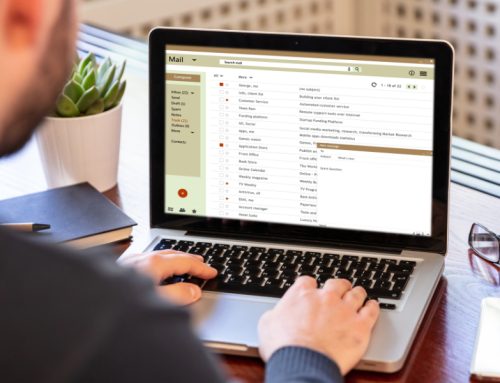The day of the pitch has passed.
Best practices in email marketing demand communications that go beyond advertising, respect the customer, and speak in a familiar one-on-one style. Email is “the most personal advertising medium in history,” says Seth Godin, whose book Permission Marketing set the rules that transformed email marketing into what it is today. “If your email isn’t personal, it’s broken.”
In response to the impersonal abuses of spam, email marketing became personal by necessity following the 2003 adoption of the CAN-SPAM Act. The act essentially defined spam as marketing messages sent without permission and set penalties not only for spammers, but also for companies whose products were advertised in the spam.
Smart marketers, recognizing that people’s aversion to spam destroyed the customer loyalty they worked so hard to build, had already begun to address the problem with best practices that focused on permission. Today, what’s best is often defined by the size of your company and the industry you’re in. But a few core practices hold for everyone.
1. Get Permission
“Email is one of the most powerful and yet one of the most dangerous mediums of communications we have,” says Jim Cecil, president of Nurture Marketing, a customer loyalty consultancy in Seattle. “Virtually everyone uses it and in business-to-business marketing everyone you want to reach has access to email. It’s also very inexpensive and it can easily be built into existing marketing systems. But of all media, it is the one where it’s most critical that you have explicit permission.”
Without permission you not only risk losing customer goodwill and inviting CAN-SPAM penalties, you could end up blacklisted by ISPs that refuse all mail coming from your domain if spamming complaints have been lodged against you.
Permission is not difficult to get. Offer something of value–a coupon or promise of special discounts, a whitepaper or informational newsletter–in exchange for the customer agreeing to receive your messages and, often, to provide valuable personal information and preferences. Sign-up can be done on a Web site or on paper forms distributed at trade shows and conventions or by traditional mail, resellers, and affiliated organizations in a business network.
2. Build a Targeted Mailing List
“The very best way to get permission is to have your best customers and your biggest fans ask their friends to sign up,” Godin says. It results in a self-screened database of prospects who are probably interested in your offering.
That is how Tom Sant built a mailing list that now numbers 35,000 for his newsletter, “Messages That Matter.” According to Sant, author of Persuasive Business Proposals and Giants of Sales, “We simply began by following up with people we met at trade shows or on sales calls and asked them, ‘Would you like to get a tip from us every few weeks about how to do your proposals better?’ We made it clear that people shouldn’t be getting this if they didn’t want to.”
Sant includes a Subscribe link in his mailing so new readers have a means of signing up when their friends forward it to them. His mailing list “just grew organically,” he says, “because people would pass it around. We created an entire network of people who were getting these messages. It’s very effective and it’s enabled us to strengthen our position as thought leaders or recognized experts in the field.”
3. Work with a Clean, Targeted Database
Jack Burke, author of Creating Customer Connections, advises that you should work with the cleanest permission-based list you can find that is targeted to your industry and your offering. Many companies have this information in CRM, SFA, and contact management databases. But there are places to prospect if you don’t.
“A good place to look is with traditional, established data merchants for your industry,” Burke says. In the insurance industry, for instance, Programbusiness.com allows its members to send broadcast emails to its database of some 50,000 targeted subscribers and members have the opportunity of selecting subsets of addresses categorized by insurance type such as commercial, health, life, and auto.
Coregistration services Web sites, such as www.listopt.com or www.optionsmedia.com, can help. Coregistration simply means you offer your e-zine and email promotions through a registration form that appears on multiple sites. You should, however, do some research to ensure they will reach your targeted demographic and the lists are maintained.
“Too many companies, large and small, are under the illusion that they have the email addresses of their clients,” Burke says. “If you actually go in and audit their client databases, you’ll find they’re lucky to have 20 to 25 percent–and what they do have is often out of date.”
4. Adopt a Strategy of Persistence
It takes time to build customer relationships. “They used to say it takes something like 7.3 impacts to make an impression with an ad, and that was long before the Internet. I believe today it’s approaching 20 imprints before it makes an impression,” Burke says. “So if you aren’t touching your clients in some way at least once a month, chances are they’re going to find somebody else to do business with.”
Successful email marketing, Godin says, “starts with a foundation and uses the email to drip the story, to have it gradually unfold.” That foundation requires an entrance strategy to greet new prospects and set up expectations for the relationship.
“After the customer has registered for future emails, downloaded your whitepaper, or entered your sweepstakes, there often is nothing to enhance that relationship. Companies need to think about what should happen next,” says Jeanniey Mullen, partner and director of email marketing at OgilvyOne Worldwide.
Ogilvy’s research shows the first three emails are the most critical. Mullen advises there should be an introductory message in which customers accept an invitation and give permission for future communications, followed by a second that sets up customers’ expectations by explaining future benefits (discounts, coupons, or high-value informational newsletters). The third should begin to deliver on their expectations by sending the promised newsletter, whitepaper, or discount offering.
5. Tell a Story
In All Marketers Are Liars, Godin emphasizes the importance of storytelling as a successful marketing strategy. Email offers the opportunity to tell the story in continuous installments.
“Email marketers don’t have a prayer to tell a story,” Godin says, “unless they tell it in advance, in another medium, before they get permission. Otherwise, it quickly becomes spam. The best email marketing starts with a foundation, like Amazon, and uses the email to drip the story, to have it gradually unfold.”
Too much email marketing, Burke opines, is one-off offers written as if recipients “like to run home at the end of the day and turn on Home Shopping Network so they can be targeted 24×7 by commercials.”
A well-crafted newsletter should be more than just a summary of your resume or company history. For instance, each issue of Sant’s Messages That Matter offers a free tip or strategy on how to make business proposals sing. “We focus on providing specific content, messages of a page or so about the kinds of things we’re good at,” Sant says.
6. Let Readers Drive Design
As there’s no such thing as guaranteed delivery in the email business, design is especially important. Because filters often block logos, graphics, and Flash animation, they can determine whether or not a customer or prospect even sees your message. “Filters are getting extremely thorough in what they’re filtering out,” Burke says. “If you’re not careful, those filters can filter out legitimate email.”
He recommends using flat text with hyperlinks to your Web site. “It’s text so it’ll go through,” Burke says. “You can put all of the graphics in the world on your Web site and once they click through to your Web site you’re better able to capture their identity and their information for future follow up.”
Many companies offer both plain and rich text email editions, giving customers the option of registering for the html edition on their Web sites. In those editions, design becomes especially important. But Ogilvy has found that email requires something different than traditional creative marketing design: Its studies have shown that users are most likely to respond to images and copy to the left of an image.
“We have seen increases up to 75 percent in response rates by moving the call to action button up next to an image instead of below the image, or by literally changing a link to a button so it stands out more prominently in the text,” Mullen says.
She has also found that the use of industry-, company-, and brand-specific words and phrases enhances the response. For instance, the word advice generates a high response for companies considered to be the thought leaders of their industry, but companies with consumer products, such as Apple with its iPod, will generate a better response using words like new or sleek.
7. Have an Exit Strategy
People who gave you their email address did so because they wanted to hear from you. But that can change and often does.
“If they stop responding,” Mullen says, “chances are it’s for one of two reasons: either they’re not interested in your content anymore or they’re no longer getting your emails.
“In either case we recommend that you define a set number of non-response messages
That number differs by industry. Travel companies, for instance, cannot predict when their customers will be traveling and looking for discounts on rooms and airfares, so their horizon is much longer–as long as several years.
On the other hand, a high-tech B2B company is probably only going to want specific information on wireless security when it’s addressing the problem internally. After the problem is solved, continued mailings about wireless security are likely to irritate. Devising a successful exit strategy is much like determining a successful formula for content: Know your industry.
8. Best Practices–Know what you want
The key to maintaining a set of successful best practices is to know what you want from them and be prepared to rewrite them as your business needs change. Mullen suggests starting with a good awareness of what you want your best practices to achieve. “Identify what you will use them for, the goal of your communications, and how you’ll define the success of your campaign,” she says.
“The most important element in any kind of successful email marketing is understanding and defining what your realistic strategy should be.”
Carol Ellison is a freelance writer in Secaucus, NJ.
Build Your Email Reputation
“Understanding developments in the enterprise/corporate environment can be enormously helpful in pursuit of best-in-class email delivery rates,” says Al DiGuido, president and CEO of Epsilon Interactive, a provider of strategic email communications and marketing automation solutions.
The latest trend in corporate filtering is reputation-based technologies that authenticate the sender using a variety of techniques that whitelist the IP addresses sending the mail.
This suggests a set of best practices, in addition to honored standards such as getting permission, to help assure deliverability. Some of these include the following:





Leave A Comment